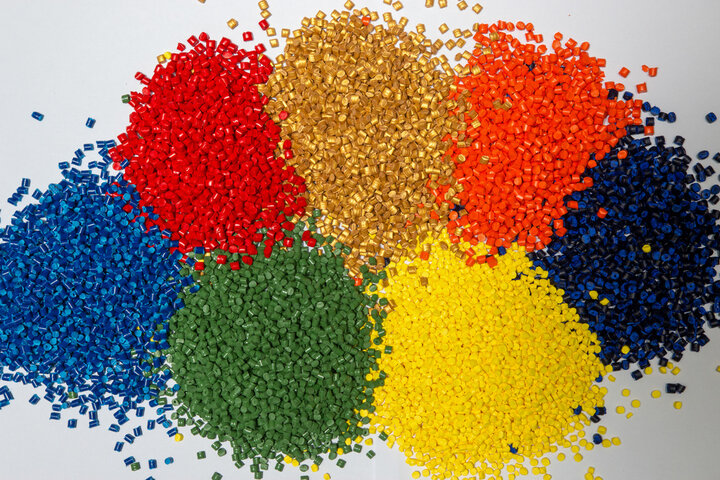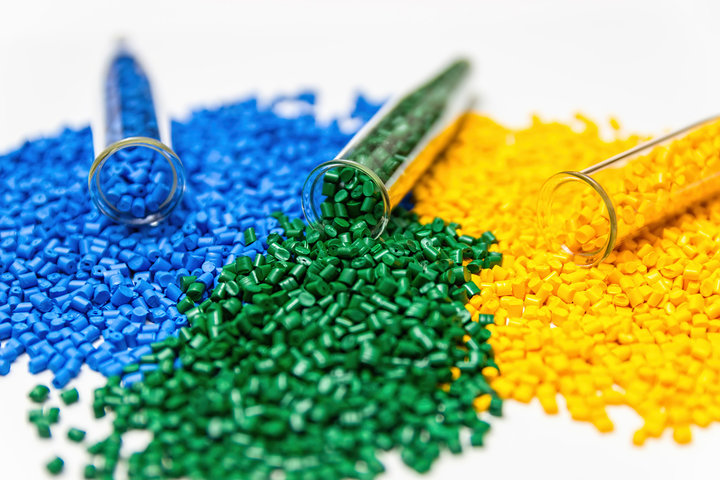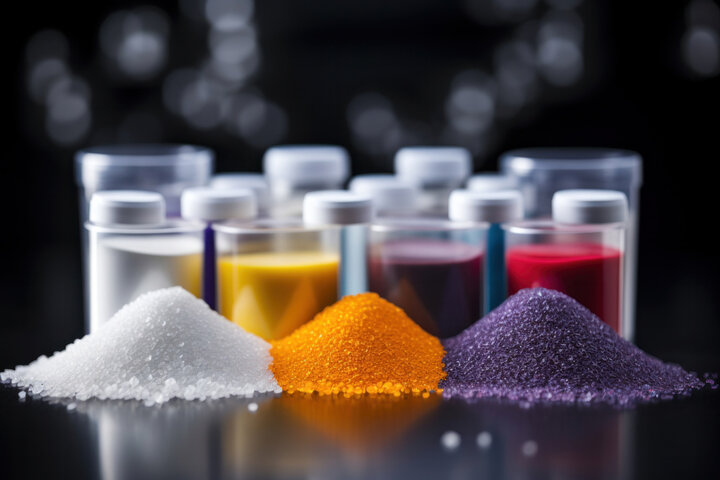Ever wondered how plastic products get their vibrant colors? In injection molding, plastic colorants transform plain resins into eye-catching products, enhancing aesthetics and brand recognition. Among various coloring methods, color masterbatch stands out as a key player. This concentrated mixture of pigments and additives offers an efficient, consistent, and cost-effective way to add color to plastics, revolutionizing the injection molding industry.
In this blog, we will present what the color masterbatch is, how it functions, and how to optimize the processing, in order to help you make wise commercial options.

What is Color Masterbatch?
Color masterbatch is a concentrated mixture of pigments and additives encapsulated in a carrier resin. It's extensively used in the plastics industry to impart color to polymer products during injection molding processes.
Composition and Key Components
Pigments:
Organic or inorganic colorants
Provide the desired hue and opacity
Carefully selected for compatibility with base polymers
Carrier Resin:
Polymer material matching the base plastic
Ensures smooth dispersion of pigments
Enhances compatibility with the main polymer
Additives:
Unique Properties
High pigment concentration (up to 70%)
Uniform dispersion capabilities
Enhances processing efficiency
Provides consistent coloration
Comparison with Other Coloring Methods
| Aspect | Color Masterbatch | Liquid Colorants | Dry Pigments |
| Form | Solid pellets | Liquid | Powder |
| Dispersion | Excellent | Good | Variable |
| Dosing Accuracy | High | Moderate | Low |
| Shelf Life | Long | Moderate | Long |
| Handling | Clean, easy | Potential mess | Dusty, challenging |
| Cost-effectiveness | High for large runs | Moderate | Low for small runs |

Types of Color Masterbatch for Injection Molding
When choosing color masterbatch for injection molding, manufacturers have several options depending on their specific needs. Each type of masterbatch offers different advantages based on color requirements and application.
Standard Color Masterbatches
Standard color masterbatches are pre-formulated color concentrates available in a wide range of common colors. They are ideal for projects where exact color customization isn't necessary, and where cost-effectiveness is a priority.
Ready-to-use colors, no need for additional formulation.
Cost-effective option for general use in a variety of applications.
Fast lead time, as they are usually in stock and immediately available.
| Feature | Benefit |
| Pre-formulated colors | Ready for immediate use |
| Commonly used shades | Meets general needs |
| Low cost | Budget-friendly |
Custom Color Masterbatches
Custom color masterbatches are formulated specifically to meet the exact color requirements of a particular project. Manufacturers can work closely with masterbatch suppliers to create unique colors, ensuring precise matching for branding or product lines.
Tailored to specific needs, offering full control over color, opacity, and additives.
Consistent quality, ensuring brand consistency across different product batches.
Perfect for unique designs where a specific or rare color is essential.
| Feature | Benefit |
| Custom formulation | Matches exact color requirements |
| Full opacity control | Adjusts transparency levels |
| Additives for function | UV resistance, anti-static, etc. |
Special Effect Masterbatches
For products that need to stand out visually, special effect masterbatches are used to achieve unique finishes. These can include metallic, pearlescent, fluorescent, or other visual effects that enhance the aesthetic appeal of the product.
Metallic Masterbatch: Adds a metallic sheen or luster to plastic parts, ideal for luxury items or electronic devices.
Pearlescent Masterbatch: Creates an iridescent, shimmering effect, often used for cosmetic or decorative applications.
Glow-in-the-dark or fluorescent masterbatches: Additives that emit light in dark environments or appear vivid under UV light.
| Special Effect | Description | Common Applications |
| Metallic | Adds reflective metal-like finish | Electronics, luxury packaging |
| Pearlescent | Gives an iridescent, soft glow | Cosmetics, personal care |
| Fluorescent/Glow | Bright colors or glow in dark | Safety products, toys |
The Color Masterbatch Production Process
Raw Material Selection and Quality Control
The production of color masterbatch begins with the careful selection of raw materials. Key components typically include polymers, pigments, and additives. High-quality polymers ensure good compatibility and processability, while pigments provide the desired color effects. Quality control at this stage involves rigorous testing of each material for purity, particle size, and performance characteristics.
Polymers: Commonly used polymers include polypropylene (PP), polyethylene (PE), and polystyrene (PS). Each polymer has distinct properties suitable for different applications.
Pigments: Both organic and inorganic pigments can be selected, depending on the required colorfastness and opacity.
Additives: Stabilizers and processing aids are also considered, enhancing the final product's durability and workability.
Compounding and Extrusion Techniques
Compounding is the next critical step where raw materials are mixed to form the masterbatch. This process typically involves the following techniques:
Extrusion: This method uses heat and mechanical force to blend the polymers and pigments uniformly. Extruders, such as twin-screw or single-screw types, are commonly used. The choice of extruder impacts the dispersion quality and final product properties.
Injection Molding: After compounding, the masterbatch can be used directly in injection molding processes. It is essential to ensure uniform distribution of color in the final molded part.
Cooling and Pelletizing: Once extruded, the material is cooled and cut into pellets for easy handling and transportation.

Quality Assurance and Color Consistency Checks
Quality assurance measures are crucial throughout the production process to guarantee the consistency and quality of the color masterbatch. Key aspects include:
Color Consistency Checks: Color matching against standard samples is performed to ensure that the produced masterbatch meets specifications. Instruments like color spectrophotometers are often utilized for precise measurement.
Physical Testing: Various tests, such as melt flow index and tensile strength, are conducted to ensure the masterbatch meets performance requirements.
Batch Tracking: Implementing a tracking system for raw materials and final products allows for effective traceability, ensuring that any quality issues can be addressed promptly.
The Advantages of Using Color Masterbatch in Injection Molding
Color masterbatch has become an essential choice for plastic manufacturers, particularly in injection molding, due to its numerous benefits. Here are the key advantages:
Consistency in Color
No color variation between batches, even when switching machines.
Better color control, ensuring every product meets the desired appearance.
Ease of Use and Handling
No special handling or safety gear needed, unlike powder pigments.
Reduced operator error due to the simple pre-mixed format.
Cost-Effectiveness in Large-Scale Production
Lower material waste due to fewer color errors.
Reduced labor for mixing and color adjustment.
Faster production cycles, minimizing machine downtime.
Reduced Contamination Risk Compared to Powder Pigments
How Color Masterbatch Works in Injection Molding
Compatibility with Different Polymer Resins
Color masterbatch compatibility depends on several factors:
Melt flow index (MFI)
Processing temperature
Chemical composition
Here's a quick compatibility guide for common resins:
| Resin Type | Compatibility Level | Notes |
| PE, PP | High | Widely used, excellent results |
| PVC | Moderate | Requires specific formulations |
| PS, ABS | High | Good color dispersion |
| PET | Moderate to High | Needs careful selection of carrier |
The Role of Carrier Resins in Color Masterbatch
Carrier resins play a crucial role in color masterbatch performance:
Pigment dispersion: They help break down and distribute pigment particles evenly.
Compatibility: Matched to the base resin for seamless integration.
Processing aid: Facilitate smooth material flow during injection molding.
Protection: Shield pigments from degradation during storage and processing.
Carrier resins are carefully selected based on:
Base polymer compatibility
Processing temperature requirements
End-use application needs
Desired physical properties
Selecting the Right Color Masterbatch for Your Injection Molding Project
Choosing the right color masterbatch for an injection molding project involves careful consideration of several key factors to ensure the final product meets both aesthetic and functional requirements.

Factors to Consider: Resin Compatibility, Processing Temperature, End-Use Requirements
Resin Compatibility
The carrier resin in the masterbatch must be compatible with the base resin of the product. Common resins used in injection molding, like polypropylene (PP), polyethylene (PE), or polystyrene (PS), each have specific requirements to ensure proper blending and color dispersion. Choosing a masterbatch with a matching carrier resin avoids problems like poor mixing or mechanical property degradation.
| Resin Type | Compatible Masterbatch Carrier |
| Polypropylene (PP) | PP-based masterbatch |
| Polyethylene (PE) | PE-based masterbatch |
| Acrylonitrile Butadiene Styrene (ABS) | ABS-based masterbatch |
Processing Temperature
The thermal stability of the pigments and additives in the masterbatch must match the processing temperature of the injection molding machine. If the masterbatch degrades under high heat, it can cause color changes, uneven distribution, or defects in the final product.
| Processing Temperature | Masterbatch Stability |
| Below 200°C | Standard masterbatch |
| Above 200°C | High-temperature masterbatch |
End-Use Requirements
The product’s intended use should guide the selection of additives in the masterbatch. If the product will be exposed to UV light, heat, or moisture, consider adding stabilizers to prevent degradation. For food packaging or medical devices, the masterbatch must comply with safety and regulatory standards, like FDA approval.
Color Matching and Consistency Across Batches
Consistency in color is crucial for maintaining brand identity and ensuring uniformity across different production runs. Color masterbatch allows for precise control over color, but even minor variations in the resin or processing conditions can lead to differences in the final appearance. To achieve consistency:
Use the same resin brand across all batches.
Maintain consistent processing parameters in every injection molding cycle.
Opt for custom color masterbatches if exact shade matching is critical, ensuring that the color remains consistent even in large-scale production.
| Factor | How to Ensure Consistency |
| Resin brand | Use the same resin type/brand |
| Processing parameters | Standardize machine settings |
| Custom masterbatch | Formulate for specific color needs |
Importance of Sample Testing and Approval
Before full-scale production, it is essential to test samples of the masterbatch and obtain approval. Sample testing ensures that the masterbatch meets the necessary color, mechanical, and chemical properties under real production conditions. Testing also helps to identify potential issues like color streaking, poor dispersion, or other defects.
Color swatches: Review small sample parts to confirm color accuracy.
Mechanical testing: Ensure the masterbatch doesn’t affect the product’s strength or flexibility.
Environmental tests: Test how the color holds up under exposure to light, heat, or chemicals, based on the product’s application.
| Test Type | Purpose |
| Color swatch test | Verify color accuracy and match |
| Mechanical testing | Ensure strength and durability |
| Environmental testing | Confirm stability under conditions |
Common Challenges and Solutions When Using Color Masterbatch in Injection Molding
Color Inconsistency Issues and Their Causes
Color inconsistency is a common challenge in using color masterbatch during injection molding. It can arise from several factors, including:
Raw Material Variability: Different batches of polymers or pigments can lead to variations in color.
Processing Conditions: Changes in temperature, pressure, or injection speed can affect the final color outcome.
Equipment Calibration: Inconsistent settings in the injection molding machine can result in uneven dispersion of color.
Addressing Color Streaking and Speckling
Color streaking and speckling are often visible defects in molded parts. These can result from:
Solutions include:
Improved Mixing Techniques: Utilizing high-shear mixers can enhance pigment dispersion within the masterbatch.
Thorough Cleaning of Equipment: Regularly cleaning molds and machines helps prevent contamination and ensures uniform color.
Troubleshooting Color Fading and Migration Problems
Color fading and migration are significant concerns in color masterbatch applications. These issues can stem from:
Environmental Factors: UV exposure and heat can degrade pigments over time, leading to fading.
Material Compatibility: Some polymers may not retain color well, resulting in migration or leaching of pigments.
To mitigate these problems:
Selecting UV-Stable Pigments: Using pigments designed for outdoor applications can enhance durability.
Conducting Compatibility Tests: Evaluating the compatibility of the masterbatch with the base polymer can help in choosing the right combination.
Environmental Considerations and Sustainability in Color Masterbatch Usage
Eco-friendly Color Masterbatch Options
Bio-based carriers: Derived from renewable resources
Biodegradable additives: Enhance plastic decomposition
Low-VOC formulations: Reduce harmful emissions
Recycling Considerations for Colored Plastics
Color sorting challenges
Contamination issues
Design for recyclability
Conclusion
Color masterbatch plays a vital role in injection molding, enhancing the visual appeal and marketability of plastic products. By ensuring consistent color and superior performance, it helps manufacturers meet consumer demands while maintaining production efficiency.
To optimize color quality, it is essential to focus on raw material selection, proper processing techniques, and regular quality checks. Continuous improvement in these areas will lead to better color consistency and durability, ultimately benefiting both manufacturers and end-users.













